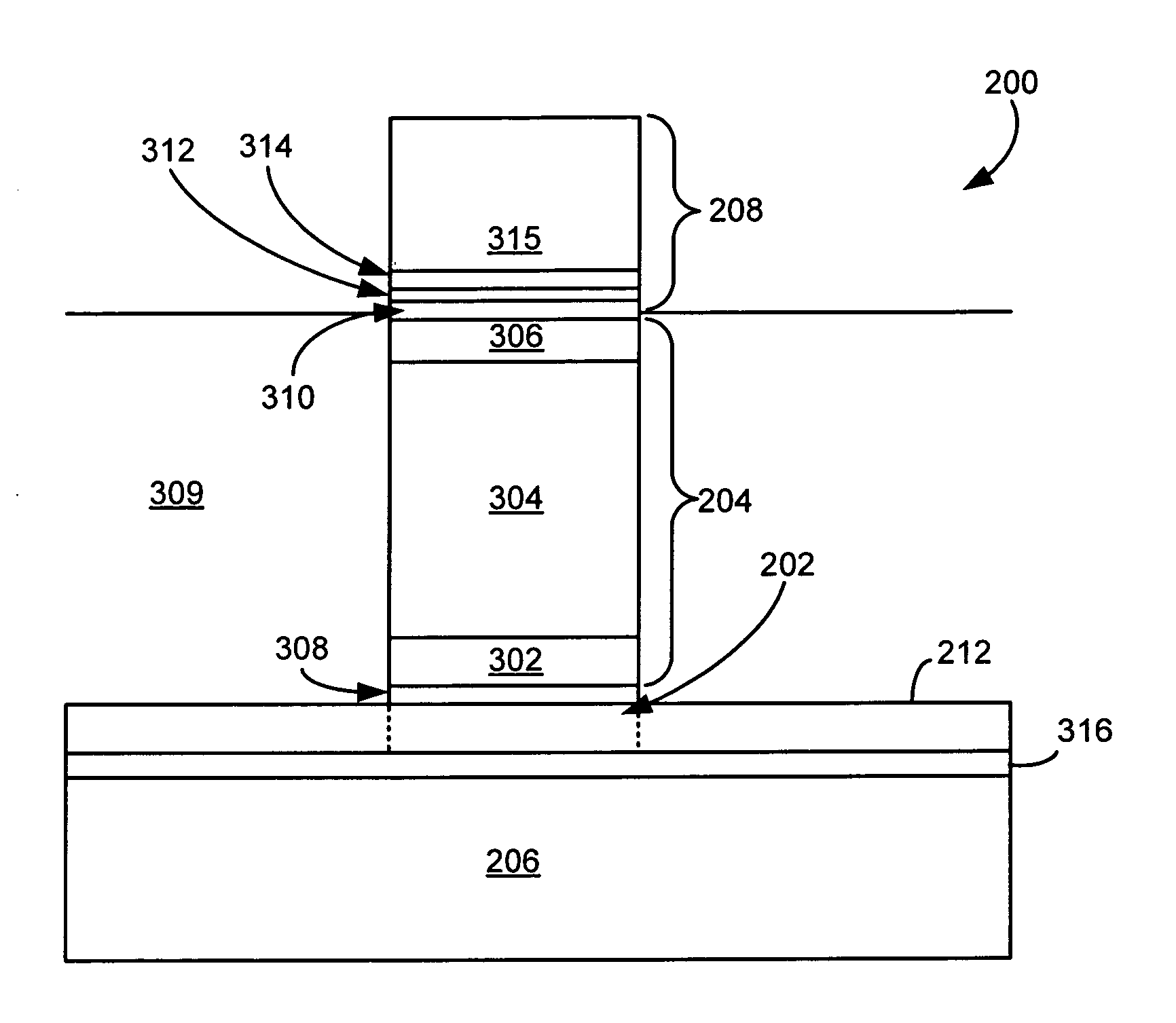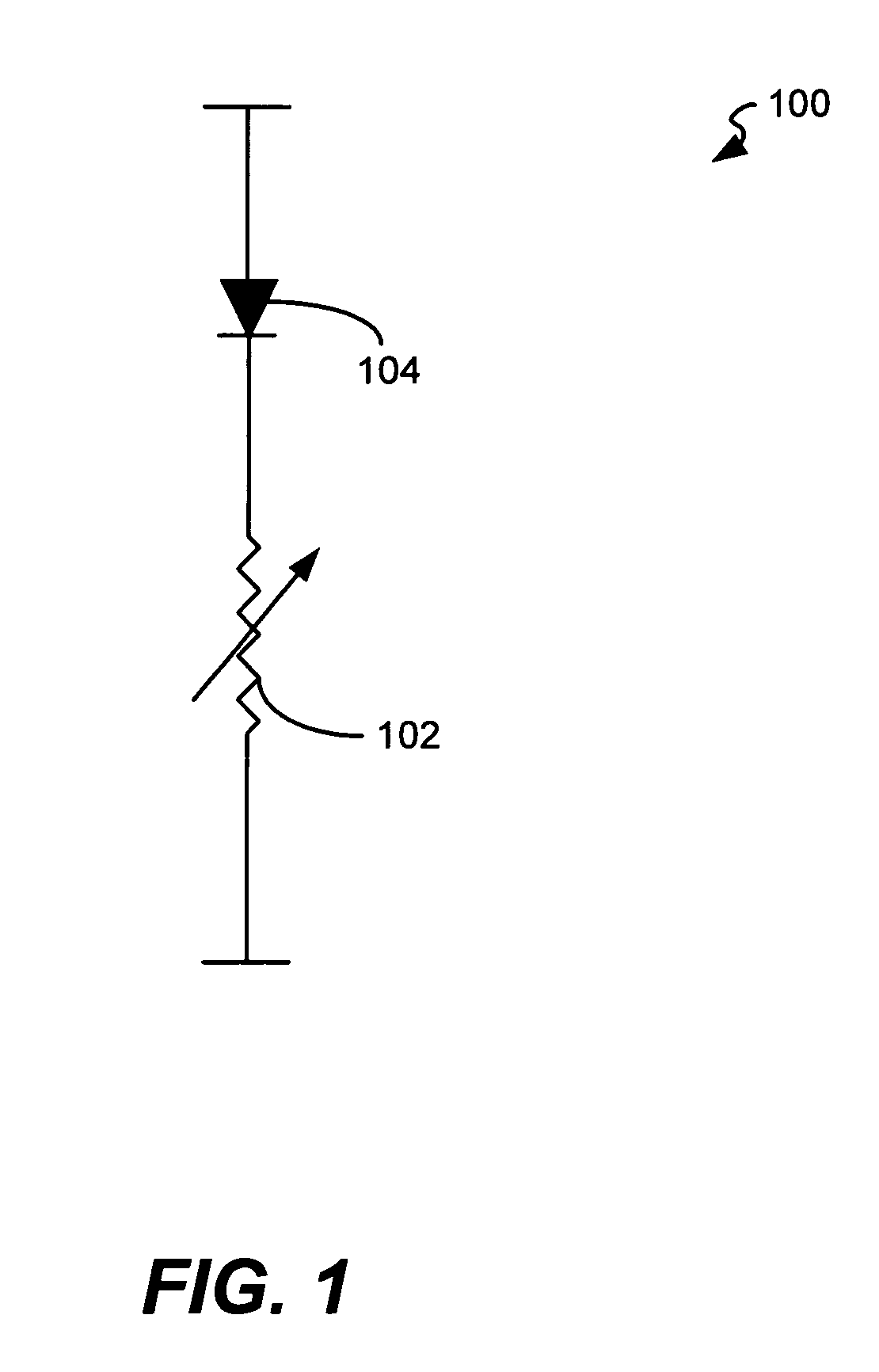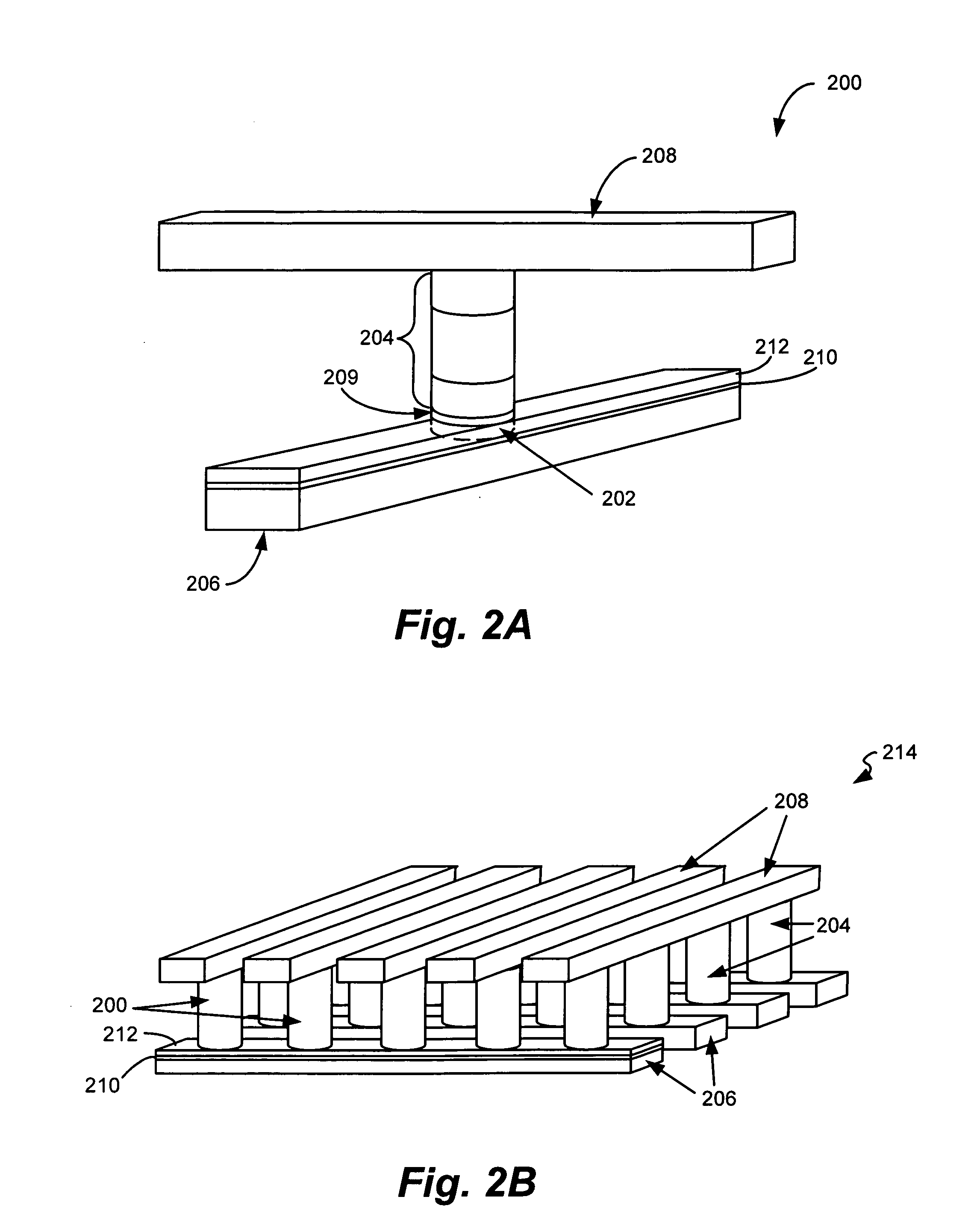Memory cell with planarized carbon nanotube layer and methods of forming the same
a carbon nanotube and memory cell technology, applied in nanoinformatics, thermoelectric devices, instruments, etc., can solve the problem of technical challenges in fabricating memory devices from rewitable resistivity-switching materials
- Summary
- Abstract
- Description
- Claims
- Application Information
AI Technical Summary
Benefits of technology
Problems solved by technology
Method used
Image
Examples
first exemplary embodiment
of a Memory Cell
[0036]FIG. 2A is a simplified perspective view of a first embodiment of a memory cell 200 provided in accordance with the present invention. With reference to FIG. 2A, the memory cell 200 includes a reversible resistance-switching element 202 (shown in phantom) coupled in series with a diode 204 between a first conductor 206 and a second conductor 208. In some embodiments, a barrier layer 209 such as titanium nitride, tantalum nitride, tungsten nitride, etc., may be provided between the reversible resistance-switching element 202 and the diode 204.
[0037]As will be described further below, the reversible resistance-switching element 202 is selectively formed so as to simplify fabrication of the memory cell 200. In at least one embodiment, the reversible resistance-switching element 202 includes at least a portion of a CNT material formed on a CNT seeding layer such as titanium nitride, tantalum nitride, nickel, cobalt, iron or the like. For example, a titanium or tant...
PUM
 Login to View More
Login to View More Abstract
Description
Claims
Application Information
 Login to View More
Login to View More - R&D
- Intellectual Property
- Life Sciences
- Materials
- Tech Scout
- Unparalleled Data Quality
- Higher Quality Content
- 60% Fewer Hallucinations
Browse by: Latest US Patents, China's latest patents, Technical Efficacy Thesaurus, Application Domain, Technology Topic, Popular Technical Reports.
© 2025 PatSnap. All rights reserved.Legal|Privacy policy|Modern Slavery Act Transparency Statement|Sitemap|About US| Contact US: help@patsnap.com



